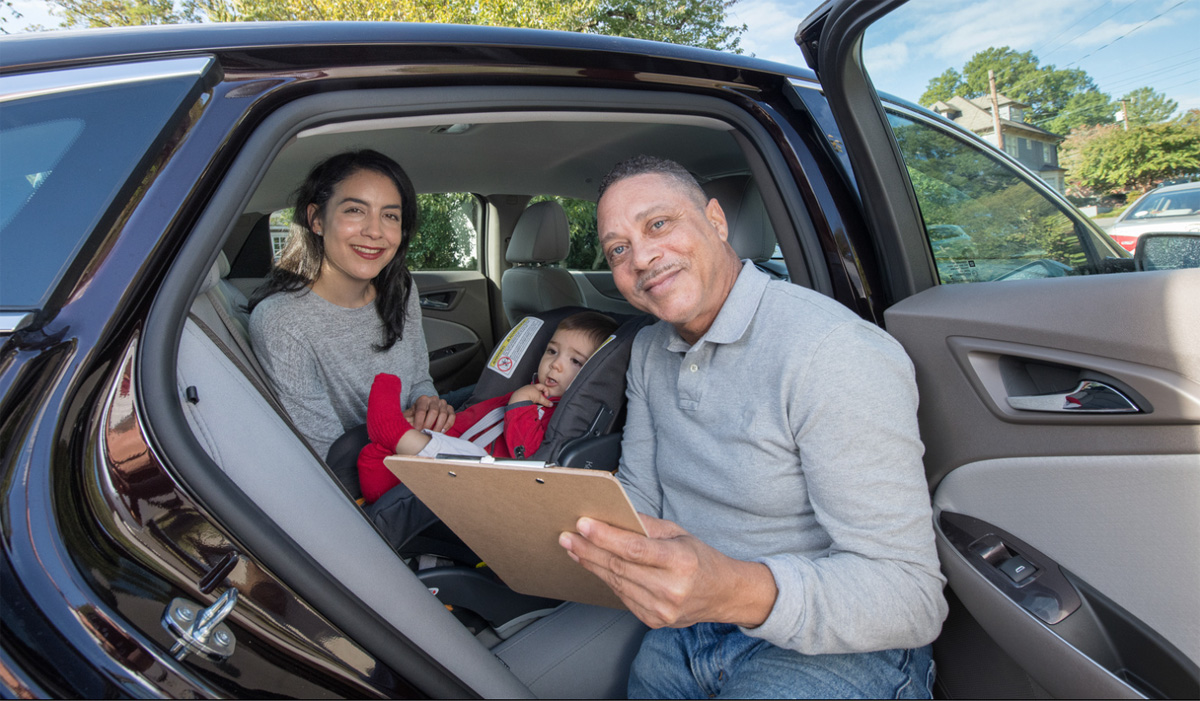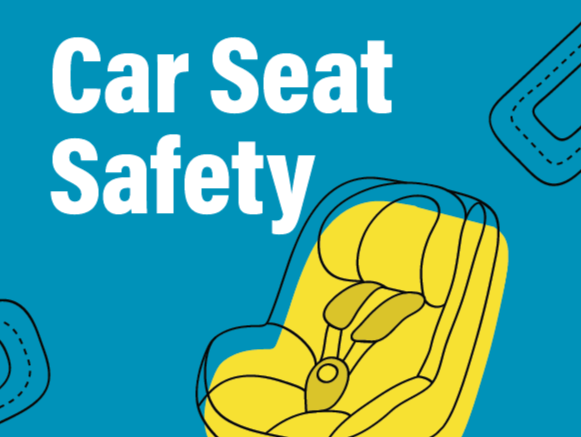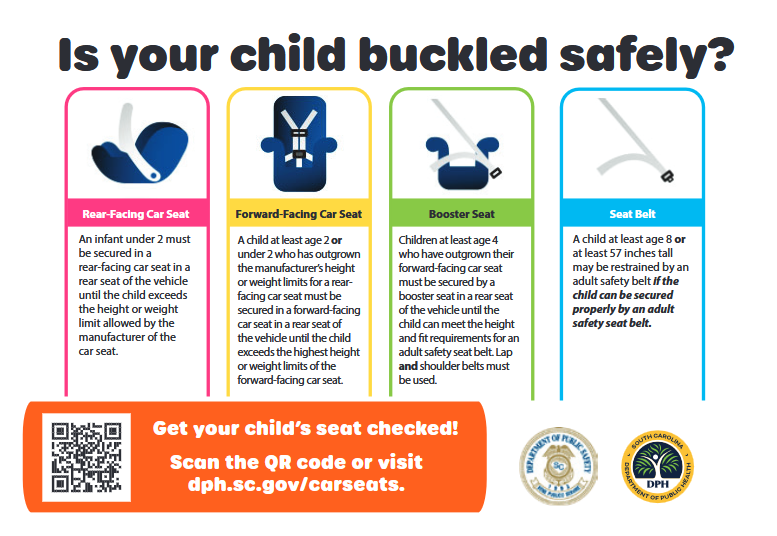Using the link above will allow you to find an Inspection Station in your county. Many locations do require an appointment. Having your car seat checked is a free service!

Welcome to South Carolina’s Child Passenger Safety Program! The Child Passenger Safety Program began in 1995. It's funded by a National Highway Transportation Safety Administration (NHTSA) grant administered by the S.C. Department of Public Safety (DPS). The goal of the program is to prevent and reduce injuries, disabilities, and death to children due to motor vehicle crashes.
This page provides information on SC State Law, locating a Certified Car Seat Technician, and additional resources!
Child Passenger Safety Tips
Based on new recommendations to American Academy of Pediatrics guidelines
- Infants and toddlers should ride facing the rear of the vehicle until they are at least 2 years old.
- Young children should ride in car safety seats with a harness until at least age 4 years, with guidance educating parents and caregivers about the benefits of riding in a seat with a 5-point harness up to the highest weight or height allowed by the manufacturer.
- School-aged children should ride in belt positioning booster seats until at least age 8 years or until the seat belt fits correctly, as described by the AAP and National Highway Traffic Safety Administration (NHTSA).
- Children should ride in the rear seat until age 13 years.
- Seat belt laws should apply to all vehicle occupants and should be subject to primary enforcement.
Additional Resources and Links
- Become a Certified Child Passenger Safety Technician
- Check here to register your child's seat and check for current recalls
- Check here to see NHTSA's child seat ratings. *Note these ratings are NOT based on overall safety but only how easy the seat is to use.
- South Carolina Department of Public Safety
- SCDPS Fatalities Dashboard
- Child Passenger Safety Law
Sources
- National Highway Traffic Safety Administration (NHTSA). Traffic Safety Facts 2021 Data: Children (Report No DOT HS 813 456). Washington, DC: U.S. Department of Transportation, National Highway Traffic Safety Administration, National Center for Statistics and Analysis; May 2023.
- Child restraint use estimates: Boyle, L. (2023, March). The 2021 National Survey of the Use of Booster Seats (Report No. DOT HS 813 396). Washington, DC: National Highway Traffic Safety Administration.
- Dept of Transportation (US), National Highway Traffic Safety Administration (NHTSA). Traffic Safety Facts: Children. Washington (DC): NHTSA; 2010. Available at URL: http://www-nrd.nhtsa.dot.gov/Pubs/811387.pdf
- SC Department of Public Safety, South Carolina Traffic Collision Fact Book 2021, chrome-extension://efaidnbmnnnibpcajpcglclefindmkaj/https://scdps.sc.gov/sites/scdps/files/Documents/ohsjp/fact%20book/2021…
For additional information please contact: childpassengersafety@dph.sc.gov
Child Passenger Safety Resources
Understanding the Importance of Child Passenger Safety
- Motor vehicle crashes are the leading cause of death and injury for children over one year of age.
- When properly installed, child safety seats can reduce the risk of death by 71 percent for infants and 54 percent for toddlers.
- Seat belt usage increases the chances of surviving a crash by nearly 45 percent.
- In 2021, 309 children (under the age of 8) were involved in a collision where any type of restraints were used. This led to 7 fatalities in 2021.
- In 2021, 49.9 percent of fatalities in SC were not wearing a seat belt.




